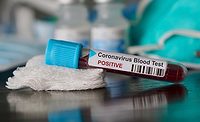The White House announced the launch of the COVID-19 High Performance Computing Consortium to provide COVID-19 researchers worldwide with access to the world’s most powerful high performance computing resources that can significantly advance the pace of scientific discovery in the fight to stop the virus.
“America is coming together to fight COVID-19, and that means unleashing the full capacity of our world-class supercomputers to rapidly advance scientific research for treatments and a vaccine. We thank the private sector and academic leaders who are joining the federal government as part of the Trump Administration’s whole-of-America response,” said Michael Kratsios, U.S. Chief Technology Officer.
This unique public-private consortium, spearheaded by The White House, the U.S. Department of Energy, and IBM, includes government, industry, and academic leaders who have volunteered free compute time and resources on their machines. These include:
Industry
- IBM
- Amazon Web Services
- Google Cloud
- Microsoft
- Hewlett Packard Enterprise
Academia
- Massachusetts Institute of Technology
- Rensselaer Polytechnic Institute
U.S. Department of Energy National Laboratories
- Argonne National Laboratory
- Lawrence Livermore National Laboratory
- Los Alamos National Laboratory
- Oak Ridge National Laboratory
- Sandia National Laboratories
Federal Agencies
- National Science Foundation
- NASA
Researchers are invited to submit COVID-19 related research proposals to the consortium via the online portal which will then be reviewed and matched with computing resources from one of the partner institutions. An expert panel of top scientists and computing researchers will work with proposers to quickly assess the public health benefit of the work and coordinate the allocation of the group’s powerful computing assets.
The sophisticated computing systems available through this Consortium can process massive numbers of calculations related to bioinformatics, epidemiology, and molecular modeling, helping scientists develop answers to complex scientific questions about COVID-19 in hours or days versus weeks or months.




